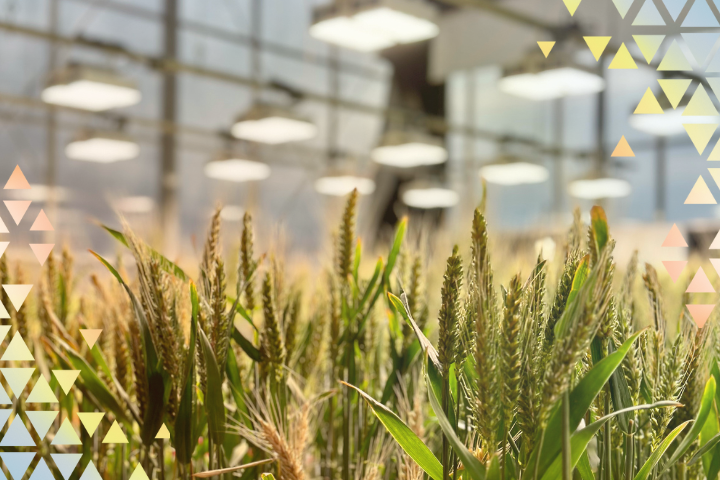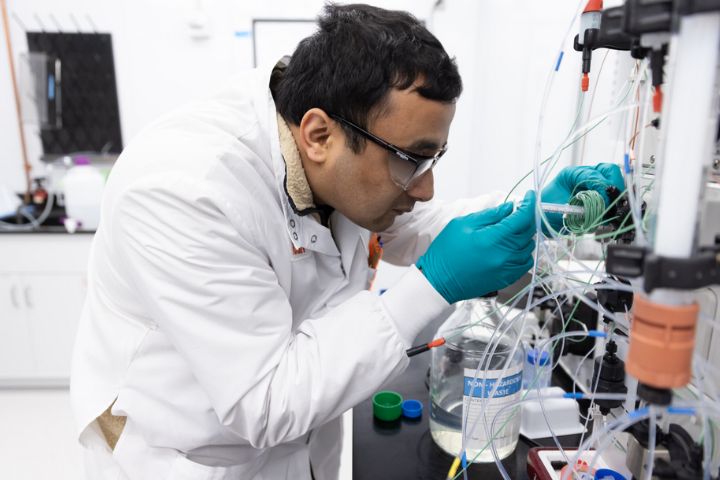By Jamie Saxon
Head of Sustainability
–
Earth Day is typically spent reflecting on how to support a better future, but today, I want to start by looking back – specifically, 80 years into the past.
In 1944, wheat farmers in Mexico could barely make ends meet. Consistent crop failures and starvation were common, with the country’s wheat supply unable to support even half its population. As crop diseases such as rust ran rampant, the crisis seemed hopeless. And yet, 12 years later, Mexico was fully self-sufficient with its wheat production. What changed?
The difference was the arrival of incredible agricultural innovations, among them the work of Norman Borlaug. His novel breeding practices resulted in new varieties of wheat that significantly increased yield while introducing resistance to rust. Crop productivity skyrocketed, and Borlaug’s innovations were ultimately credited with saving billions of people from starvation and earned him the Nobel Peace Prize.
Thinking back to 1944, those wheat farmers likely felt their challenges were insurmountable just as they were on the cusp of an amazing turnaround. It’s a good analogy for where I believe our world is in the fight to address climate change: at times exasperated and overwhelmed, but also on the verge of significant progress. Another similarity: Agricultural innovation will again be critical to the solution.
I write this fully aware of our industry’s public reputation. Limited by existing technologies, practices, and commodity market structures and incentives, it is true that agriculture is currently a leading contributor to greenhouse gas emissions. But this community also uniquely understands and values the connection to land and animal, and innovators now have the technological capabilities to equip farmers with better tools to not only continue to feed our growing global population, but to do so in a more nature-positive way.
At Inari, we focus on achieving food system sustainability, taking a three-pillared approach prioritizing positive environmental impact, food security and long-term farmer well-being – in other words, supporting the planet, the population and the people who grow our food. When you move the needle on all three, broadscale impact is possible.
How does an organization chart a course toward this type of progress? While many industries can calculate a net present value to estimate financial returns, there has been no equivalent way to calculate expected returns on social or environmental metrics. (ESG ratings are not the answer.) Inari is working toward a solution by leveraging MIT’s dynamic systems modeling in novel ways, quantifying the potential impacts our products will have across multiple direct and indirect environmental, social and financial metrics. For example, by incorporating impact assessments at the beginning of our development pipeline – and a constant feedback loop that sharpens our models’ predictions – we can be confident that we are eventually positively addressing food system sustainability.
These types of innovations fuel my optimism despite the relentless pace of bad climate-related news. Even AgFunder’s latest Global AgriFoodTech Investment report gave me hope, because while overall investment in the sector saw a steep drop in 2023, the percentage of funding to upstream startups specifically innovating to address climate change and food insecurity actually increased. Investors recognize the urgency – and the possibilities.
I know this is welcome news to farmers, whose dealings with Mother Nature are getting increasingly complicated. I have some personal experience here, with my own brother preparing to take over my dad’s corn and soybean farm in northeast Mississippi, one of the U.S. states most at risk of climate-related disaster. While I don’t recall a single year growing up when my dad didn’t experience some level of weather-related stress (there was always too much or too little rain, and often too much heat), predictions about Mississippi’s future take this to another level.
When the situation looks particularly bleak, I remember how challenging the world must have seemed for those Mexican wheat farmers 80 years ago and the difference that a few years – and some sharp, committed minds – were able to make. My hope, and belief, is that history will repeat itself, and agricultural innovation will again play a key role in delivering a more secure, sustainable future.
RELATED POSTS
Three Ways Gene Editing Supports Biodiversity
Genetic diversity in plants is the foundation of resilience, productivity, and adaptability. It enables crops to withstand environmental pressures, resist diseases, and thrive in varying climates, the result of millennia…
Inari’s Labs Achieve ‘My Green Lab’ Certification
We have a deep commitment at Inari to food system sustainability, which in addition to prioritizing food security and improved farmer well-being puts a focus on better caring for our…
An October Reflection on Food System Sustainability
By Jamie SaxonHead of Sustainability – Harvest season is in full swing in the U.S., a time of year that’s equal parts exciting, nerve-wracking and busy for farmers as they…


